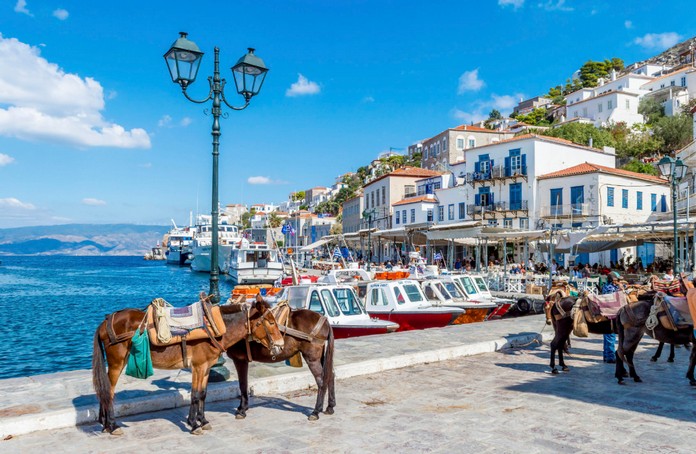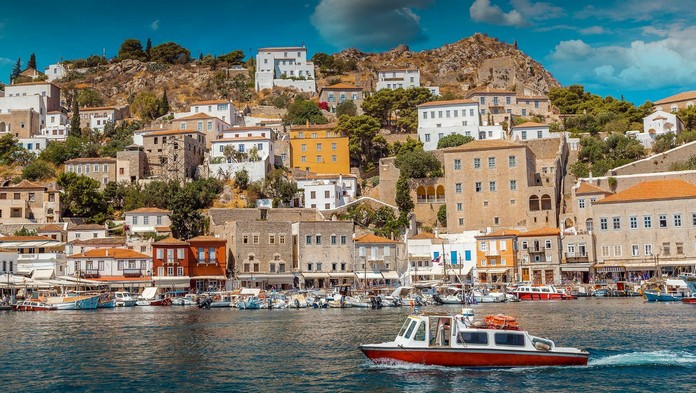Whatever description a visitor may have of Hydra will certainly prove to be inadequate when one sees this unique island town for the first time.
The tiled houses, faithful to the traditional architectural style, make a lasting impression from the very first moment.

Shaped like cubes, these houses are very simple with a roof terrace or possibly a courtyard. The courtyards always have flowers though these are difficult for the visitors to see since the walls are high. The walls are usually grey in color. Severity of line predominated everywhere but a white window frame is enough to break the monotony and give houses a cheerful appearance. The picturesqueness has helped Hydra become a “cosmopolitan” island in summer and a heaven of peace in winter.

History
The oldest settlement that was found on the island is Myceneaenan. We don’t know much of the island’s history until the 17th century AD when the island began to acquire a powerful merchant fleet. Later, at the time of the Napoleonic wars, it monopolised sea transport throughout the Mediterranean. When the uprising against the Turks broke out in 1821, Hydra had a population of 30 000 and 150 vessels.
The island’s wealthy sea-captains- the Kountouriotis brothers, Miaoulis, Sachtouris and Tombzis among them- fitted out their vessels as warships and spent their whole fortune in order to help the struggle. The Hydra fleet joined those of Spetses and Psara to inflict serious damage to the Turks.
The heroism of the crews became a byword throughout Europe. Besides their vessels, the island seamen made use of fire ships- small boats loaded with explosives which they brought by night alongside the Turkish vessels and then blew them up.
The superiority of Hydriots and the companions of arms at sea was a determining factor in the success of the Greek Revolution. Getting around the island
Getting around the island
The old mansions of the captains of 1821 (built by genoese or Venetian architects) dominate the port of Hydra. Some of these are open to visitors and thus provide an opportunity to admire their interior decoration with the marble floors, wooden ceiling and old furniture.
The old cannons used for the town’s defence are still in place at the entrance of the harbour. In the middle of the breakwater, close to the sea, is the MOnastery of the Dormition of the Virgin, now Hydra’s cathedral. In its courtyard stands a statue of the freedom fighter Miaoulis. A climb through the narrow alleys of the town to the top of its hills should not be missed.
From this top the visitor can admire the view of the harbour. A fine view can also be obtained by climbing to the Monastery of the Prophet Elijah, in the center of the island at a height of 500m. From the monastery, hikers can make the ascent to the island’s highest peak, Erotas (593m).
Those who are more drawn to the sea can swim in the deep waters of Spilia, near the port, at the organized beach of Mandraki, at Kaminia with its large pebbles and at Vlychos. The last three are fairly close to the port and can be reached either by boat or on foot. Further off are the beaches of Molos and Bisti.